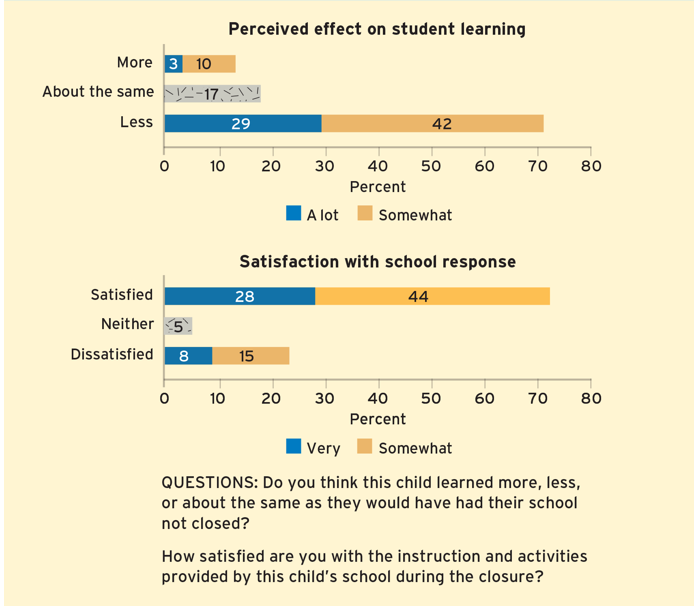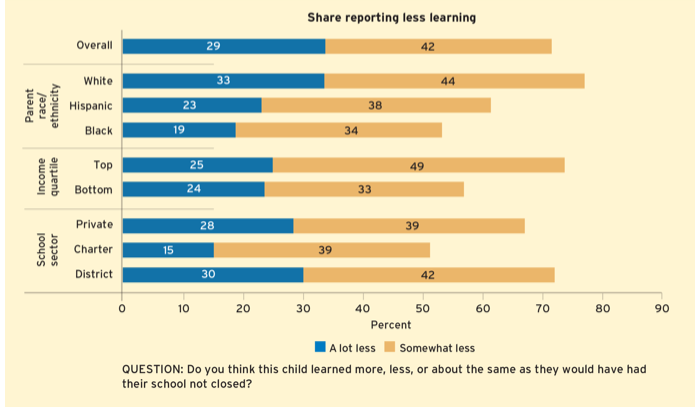
COVID-19 upended and changed the lives of millions of Americans this spring, forcing the nation’s schools to close and requiring a shift from in-person to virtual learning. In retrospect, what do parents think about the quality of instruction their children received?
Education Next surveyed them to find out. The results, released earlier this week, paint an interesting picture.
Among the 1,249 parents of 2,147 children surveyed, 71% said they thought their children learned less at home than they would have had they been in school. But surprisingly, 72% said they were satisfied with the attempt.
Black and Hispanic parents reported higher satisfaction with remote learning (30% and 32%, respectively), than white parents (26%). Charter school and private school parents (45% and 39%, respectively), reported higher satisfaction than parents whose children attended a public district school (29%).

Not all schools prioritized learning new content according to the survey. Overall, 74% of parents said their child’s school introduced new content, while 24% said the school focused on reviewing content students had already learned.
A large gap in perception persisted between high- and low-income families. Among low-income families, 33% reported that schools reviewed content students had already learned, compared to 19% of high-income parents.
Parents overall reported that one-on-one meetings between students and teachers occurred rarely, with only 38% saying such meetings occurred at least once a week. About 40% said one-on-one meetings never occurred.
Parents reported that class-wide meetings occurred more frequently, with 69% reporting class-wide virtual meetings with teachers occurred at least once a week.
Black parents reported their children spent more time per day (4.3 hours) on schoolwork than white parents (3.1 hours). Black parents also said their students suffered less learning loss than the parents of white students.
The survey also included a sample of 490 K-12 teachers who work in schools that closed during the pandemic. Teachers’ responses generally mirrored how parents described their children’s experiences with several exceptions.
Thirty-six percent of teachers said they met individually with students multiple times a week, compared with 19% of parents. Teachers also reported providing grades or feedback more often than parents. Meanwhile, teachers reported providing fewer required assignments than parents said their children received.
Parents and teachers generally agreed on how much students learned during distance learning, with teachers more likely than parents to say children learned less than they would have if schools had remained open.
The survey was conducted from May 14 to May 20 by the polling firm Ipsos Public Affairs via its KnowledgePanel. Respondents could elect to complete the survey in English or Spanish.


